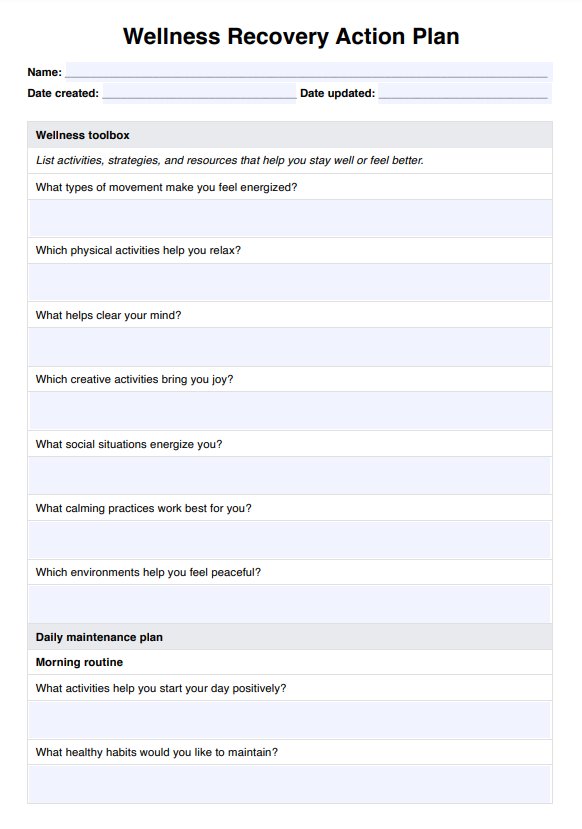To create a Wellness Recovery Action Plan Template, identify your wellness toolbox, daily maintenance plan, triggers, early warning signs, crisis plan, and post-crisis plan. For a user-friendly experience, utilize a structured template or app, such as Carepatron.

Wellness Recovery Action Plan
Download a free Wellness Recovery Action Plan Template, a comprehensive guide for proactive mental health management.
Wellness Recovery Action Plan Template
Commonly asked questions
Wellness Recovery Action Plan Templates are used proactively for daily mental health management and reactively during challenging times. They guide individuals to navigate their mental health journey, providing strategies for prevention, crisis intervention, and post-crisis support.
Individuals use the templates to document personalized strategies for maintaining mental well-being. They include activities, coping mechanisms, and crisis interventions. Mental health professionals may also incorporate these plans into treatment, and individuals can share them with support networks for better understanding and assistance.
EHR and practice management software
Get started for free
*No credit card required
Free
$0/usd
Unlimited clients
Telehealth
1GB of storage
Client portal text
Automated billing and online payments











